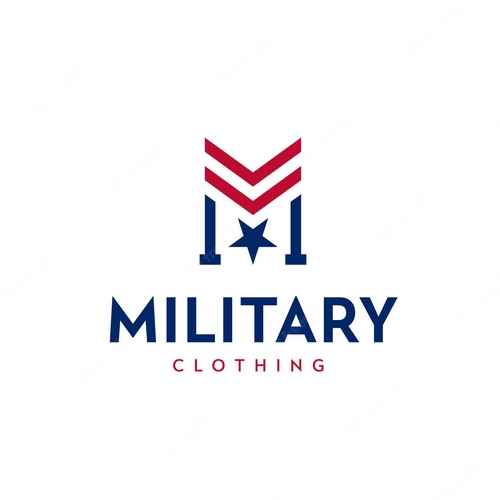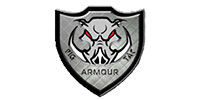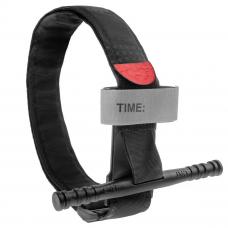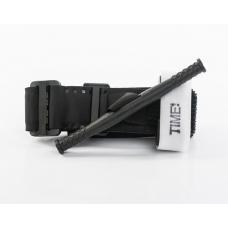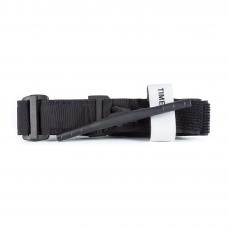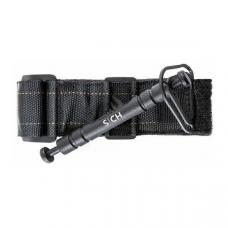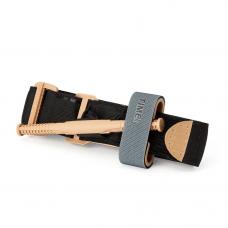In a military first aid kit, it's essential to have hemostatic tools and agents. To replace traditional rubber tourniquets, which can tear at critical moments, more durable and practical CAT and SWAT tourniquets made of robust and wear-resistant materials have emerged. With them, it's possible to quickly stop both arterial and venous bleeding in a limb, reducing the risk of fainting due to blood loss and preventing wound infection.
In the network of military goods stores PROF1GROUP, you can buy CAT, SWAT, Esmarch tourniquets, and tactical first aid kits fully equipped. Ukrainian and foreign brands' products are available, the quality of which is guaranteed by international certificates, adoption by militarized and law enforcement agencies, and customer reviews.
Types of Tourniquets
A tourniquet for stopping blood flow is necessary for tightening and compressing tissues, thereby also occluding blood flow in the injured limb. It should be placed above the wound, temporarily excluding the limb from the bloodstream.
A tactical tourniquet is a disposable rubber, leather, or fabric strap with a tightening regulator. There are such varieties:
- Esmarch tourniquet - a rubber band, concave on one side, with a button, 140 cm in length and 2.5 cm in width for quick application with one hand;
- Alpha tourniquet - made of ribbed rubber, wear-resistant and tear-resistant, can be used at extreme negative temperatures;
- SWAT tourniquet - a versatile tourniquet serving as a compression bandage and elastic bandage for limbs, chest, and abdominal cavities with graphic hints for easy application;
- CAT tourniquet - an American tourniquet of the most demanded model, adopted by the US Army and many European countries; it consists of Velcro with a textile fastener, a compressor rod, and a buckle.
A military tourniquet should be included in tactical gear for every serviceman. With its help, first aid is provided in case of injury. The type of tourniquet only matters for ease of use, but with proper training, reflexes for correctly applying and tightening any model of tourniquet are developed automatically.
Advantages of Tourniquets
A hemostatic tourniquet is widely used by military medics in providing emergency care to the wounded on the battlefield, as well as by soldiers themselves. It's a simple but reliable tool capable of preventing excessive blood loss and wound infection. Its advantages include:
- Universality - due to the strength and sufficient length, the tourniquet can be used on different parts of the body;
- Safety - the tourniquet can be fixed over clothing, additional wound cleaning is not required;
- Easy to use - after several training sessions, skills for applying the tourniquet are developed, both by medics and civilians;
- The ability to apply with one hand, which is important for soldiers in combat conditions;
- Strength, lightness, and compactness - for transportation, pouches for tourniquets or ordinary pockets in military uniforms can be used.
Tourniquets are made of rubber, fabric, or latex. The most reliable ones are leather models with buckles or Velcro for fixation.
How to Use a Tourniquet
A medical tourniquet should only be used after training and practice under the supervision of a specialist. The tourniquet is applied above the wound, tightly tightened using the fastener, after which the rod should be twisted to stop the bleeding. Due to the large length and universal fastening method, it can be used on any limb, as well as on the head. As a compression bandage, the tourniquet is applied to the torso - on the abdomen or chest.
An occlusion tourniquet should not be on the body for more than 40 minutes in summer and 2 hours in winter. After this time, the tourniquet should be removed for 30 minutes to restore tissue blood supply. To avoid exceeding the norm, it's important to leave a temporary mark when applying the tourniquet. After stopping the bleeding, the tourniquet pressure should be loosened. Timely removal prevents tissue necrosis.
The correctness of the tourniquet placement can be checked by the presence of a pulse below the wound. If it's audible, the tourniquet is applied incorrectly. In this case, cyanosis of the limb may also be observed.
It's not recommended to reuse the tourniquet as it may stretch, reducing pressure, but it's suitable for training. The tourniquet width should not be less than 2 cm, as too narrow straps can excessively compress tissues and vessels, causing irreparable damage.
After using the tourniquet, the wound should be examined by a doctor, applying a hemostatic agent that is gentle on the tissue condition.
Where to Buy Tourniquets for Military in Ukraine
In the network of stores selling military goods PROF1GROUP, you can buy the Esmarch, SWAT, or CAT tourniquets, as well as medical and tactical gear for equipping military medics and servicemen. Military uniforms, footwear, pouches, personal protective equipment, tools, and hiking accessories are available. Orders can be placed online with delivery by postal services across Ukraine or in physical stores of the network. Our assortment is regularly updated to provide customers with the most relevant offers.


